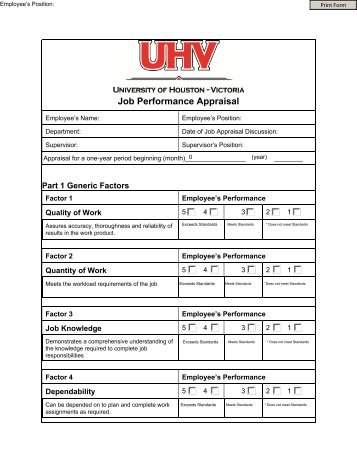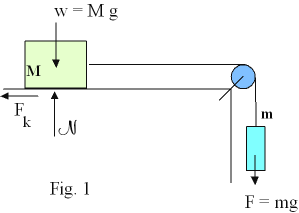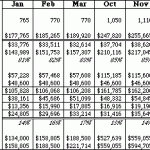
The process is particularly valuable for companies that offer credit options to their customers. They can then look for errors in the accounting records for customers and correct these when necessary. This generally takes place at the end of the month as part of the account closing process. This would be immediately before a business puts out its monthly financial statements. You would need to justify, explain, or correct any differences or discrepancies. When there are no unexplained differences, an accountant is able to sign off the process.
Amount paid by the customer is not completely reflecting in the bank
- In general, reconciling bank statements can help you identify any unusual transactions that might be caused by fraud or accounting errors.
- Companies which are part of a group tend to perform intercompany reconciliations at month-end.
- Adding to the challenge, sometimes an entry in the general ledger may correspond to two or more entries in a bank statement, or vice versa.
- Automated reconciliation also flags discrepancies so they can be investigated immediately rather than months later.
When you use accounting software to reconcile accounts, the software does most of the work for you, saving you a good deal of time. However, the process still needs human involvement to capture certain transactions that may have never entered the accounting system, such as cash stolen from a petty cash box. Publicly held companies must keep their accounts consistently reconciled or risk being penalized by independent auditors. Many companies have systems for maintaining payment receipts, account statements, and other data necessary to document and support account reconciliations. Access the internal source of data being reviewed (i.e. the bank ledger account on your accounting software) and compare it against the external document it is being compared against (i.e. bank statement). Confirm that the opening balance on the former agrees to the closing balance on the latter.

Vendor statements
Companies need to reconcile their accounts to prevent balance sheet errors, check for possible fraud, and avoid adverse opinions from auditors. Companies generally perform balance sheet reconciliations each month, after the books are closed for the prior month. This type of account reconciliation involves reviewing all balance sheet accounts to https://www.quickbooks-payroll.org/ make sure that transactions were appropriately booked into the correct general ledger account. It may be necessary to adjust some journal entries if they were booked incorrectly. According to a survey conducted by the Association of Certified Fraud Examiners (ACFE), financial statement fraud constituted 9% of all reported fraud cases in 2022.
Business is Our Business
Accuracy and strict attention to detail are the fundamental principles of this process. Various factors, such as timing differences, missing transactions, and mistakes can cause these discrepancies. Account reconciliation is typically carried out at the end of an accounting period, such as monthly close, to ensure that all transactions have been accurately recorded and the closing statements are correct.
Intercompany reconciliations are undertaken by companies which are part of a wider group. Performing intercompany reconciliations allow for the parent company to produce accurate consolidated accounts. There are 5 main recognised kinds of reconciliation accounting that are industry-wide. These processes demonstrate a company’s focus on accuracy and thoroughness. This process requires you to compare internal records at the beginning and end of a financial cycle. It will let you see if the goods you sold or services you provided match up with your internal records.
For the legal profession, however, regular, effective reconciliation in accounting is key to maintaining both financial accuracy and legal compliance—especially when managing trust accounts. The risks of not reconciling bank statements to general ledger cash accounts are that fraud or errors may not be detected and financial statements used for both internal and external financial reporting may be inaccurate. Cash flow may also be affected if general ledger account balances are inaccurate. Intercompany transactions include adjusting entries for profit elimination relating to general ledger accounts like intercompany revenues, accounts receivable, fixed assets, inventory, accounts payable, and cost of sales.

Accounting software is one of a number of tools that organizations use to carry out this process thus eliminating errors and therefore making accurate decisions based on the financial information. Reconciliation of accounts determines whether transactions are in the correct place or should be shifted into a different account. As CEO and Co-Founder, Mike leads FloQast’s corporate vision, strategy and execution. Prior to founding FloQast, he managed the accounting team at Cornerstone OnDemand, a SaaS company in Los Angeles.
These reconciliations can be performed in several ways, depending on the context. While the entries in the general ledger are based on the facts of the moment, they may not always be accurate. When you receive a check from a customer, you may have recorded it as paid. But there are chances that the check could have bounced due to numerous reasons. Or the payment you made to supplier A went into the accounts of supplier B due to a clerical error.

In order for reconciliation in account to be most effective in preventing errors and fraud, it’s important to conduct the process frequently. And, for some types of accounts, like trust accounts, there may be specific frequency requirements that you must follow to stay compliant with your state bar. How often should you conduct the three-way reconciliation accounting process? As noted earlier, your state may have specific requirements for how often you must conduct three-way reconciliation—such as monthly or quarterly.
Still, the supporting documentation (i.e., a bank statement) says the bank account has a balance of $520,000. Most account reconciliations are performed against the general ledger, considered the master source of financial records for businesses. Reconciliations are usually performed at the end of an accounting period, such as during the month-end close process, lump sum purchase definition to ensure that all transactions are correctly verified and the closing statements are accurate. In single-entry bookkeeping, every transaction is recorded just once (rather than twice, as in double-entry bookkeeping), as either income or an expense. Single-entry bookkeeping is less complicated than double-entry and may be adequate for smaller businesses.
Reconciliation also confirms that accounts in a general ledger are consistent and complete. When you reconcile accounts, you compare two or more sources of a company’s accounting to check for errors and bring them into agreement. When the process has worked well, it will https://www.business-accounting.net/what-is-business-turnover-and-how-do-you-calculate-it/ have picked up on any inaccuracies or instances of fraud. The process is important because it ensures that you can weed out any unusual transactions caused by fraud or accounting errors. But, generally accepted accounting principles (GAAP) demand double-entry accounting.
Inventory reconciliation makes sure that physical inventory counts align with your general ledger. It accounts for transactions related to inventory and accounts payable and reconciles discrepancies. Additionally, it considers factors like the allowance for obsolescence and inventory valuation. Most companies have numerous assets including immovable property, machinery, inventory, cash assets, and more. Over time, these assets can be sold or written off according to their stage in the lifecycle or due to depreciation.
Once the individual client ledgers and the firm’s trust account ledger are aligned, you can then reconcile the client ledgers and trust account ledgers with your trust bank account statement. Once you have access to all the necessary records, you need to reconcile, or compare, the internal trust account’s ledger to individual client ledgers. For law firms, for example, one key type of business reconciliation is three-way reconciliation for trust accounts. There are many types of reconciliation in accounting, with the best method for a situation generally depending on the type of account that you’re looking to reconcile. In the following post, we’ll cover the crucial types of reconciliation for legal professionals and delve into the fundamentals of three-way reconciliation accounting. Plus, we’ll offer useful best practices for reconciliation in accounting for lawyers to help make the process easier, more effective, and more efficient.
